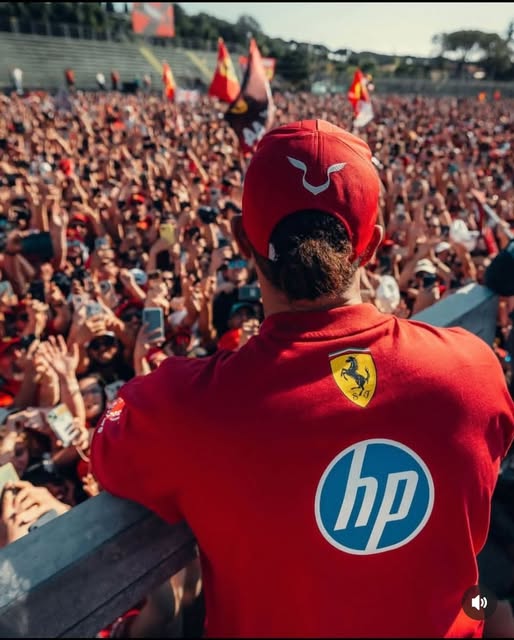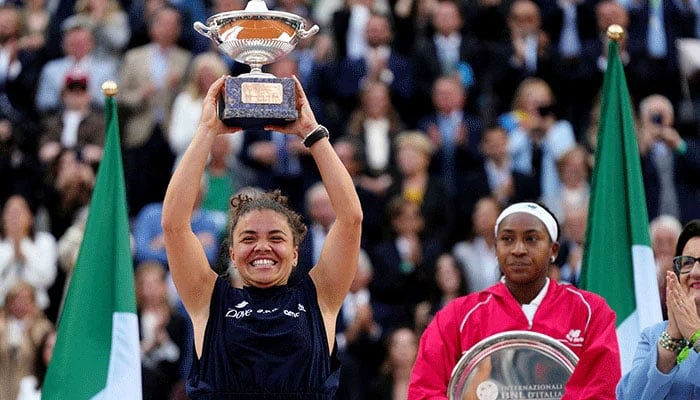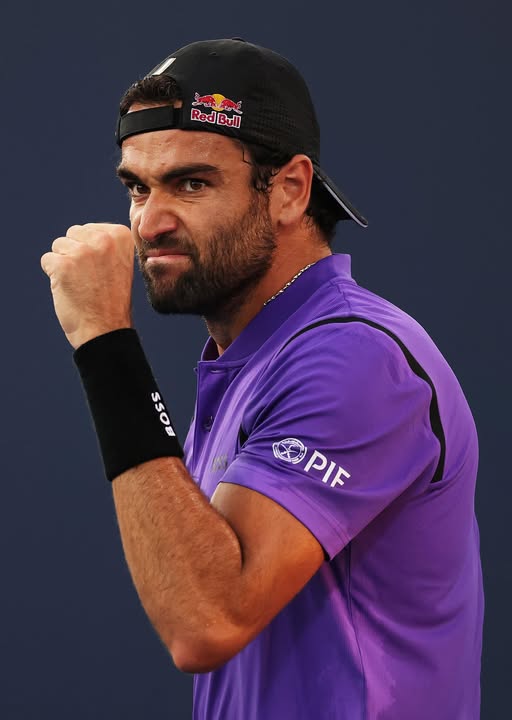Introduction: A Rivalry That Refuses to Cool Down

In the high-octane world of Formula 1, few rivalries are as dramatic and persistent as the one between Lewis Hamilton and Ferrari. Whether it’s strategic mind games, track controversies, or behind-the-scenes drama, the tension between the seven-time world champion and the iconic Italian team continues to generate headlines and stir emotions across the motorsport community.
But why now? With Hamilton set to join Ferrari in 2025, you’d expect the atmosphere to be collaborative—perhaps even optimistic. Yet, the opposite seems true. Rumors of internal discord, strategic disagreements, and conflicting expectations are painting a picture far removed from harmony.
In this post, we break down the real reasons behind the latest flare-up between Hamilton and Ferrari, answer the most asked questions, and reveal insider insights that could reshape the landscape of F1 in 2025. If you’re an F1 enthusiast, team strategist, or just love behind-the-scenes sports drama—this is the post you don’t want to miss.
The Backstory: Hamilton and Ferrari’s Turbulent Relationship
Lewis Hamilton and Ferrari have a history as complicated as it is compelling. While there’s always been mutual admiration, negotiation attempts in previous seasons repeatedly failed. Hamilton remained with Mercedes, where he won six of his seven world titles. But that didn’t stop speculation about a future with Ferrari.
In early 2024, shockwaves hit the motorsport world when Ferrari officially announced Hamilton would replace Carlos Sainz in 2025, pairing him with Charles Leclerc. The move was hailed as a power play—Ferrari acquiring F1’s most decorated driver to reclaim dominance.
However, even before donning the red suit, Hamilton has found himself embroiled in a series of indirect confrontations with Ferrari personnel, media reports, and team dynamics.
Let’s dive into the key factors behind the renewed tension.
1. 🧨 Contractual Clauses and Control Issues
One of the earliest points of friction appears to stem from Hamilton’s rumored demands for strategic influence over Ferrari’s operations. Reports from Italian outlets such as La Gazzetta dello Sport suggest Hamilton wanted a say in driver strategy, technical development, and personnel decisions.
This clashed with Ferrari’s traditionally hierarchical structure, which prioritizes team loyalty and centralized authority. According to insiders, team principal Frédéric Vasseur is pushing back hard on any attempts to change Ferrari’s decision-making core.
🧠 F1 Fact: Ferrari has not won a Constructors’ Championship since 2008. Many hoped Hamilton’s arrival would usher in a new leadership dynamic—but so far, it’s sparking power struggles instead.
2. 🛑 Clashing Egos: Hamilton vs. Leclerc
Pairing two elite drivers can be a blessing or a curse. Hamilton is arguably F1’s GOAT, while Charles Leclerc is Ferrari’s golden boy and the current face of the team. Both are known for their competitiveness, but not necessarily for yielding ground.
Leclerc, who signed a contract extension until 2029, reportedly feels uneasy about sharing No.1 status. A recent Monaco GP interview saw him dodge questions about Hamilton’s arrival, adding fuel to speculation that team harmony is under threat.
FAQs:
Q: Will Ferrari designate a clear No.1 driver in 2025?
A: Unlikely. Publicly, Ferrari insists on equal footing, but internally, performance and politics may shift the balance.
Q: Can Hamilton and Leclerc co-exist peacefully?
A: History shows top-tier teammates often clash (think Hamilton vs. Rosberg at Mercedes). It will take exceptional management to avoid chaos.
3. 🗞️ Media Mistrust and Narrative Control
Hamilton has voiced his discomfort with how Ferrari-related stories are being leaked to the press. During the 2025 pre-season media day, he subtly criticized “unnamed sources” from within the team painting “incomplete pictures.”
Ferrari’s camp, known for its strong media control in Italy, appears to be selectively shaping the narrative, often framing Hamilton as the diva demanding change before even arriving. This manipulation hasn’t gone unnoticed, and sources close to Hamilton say he’s reconsidering his level of public engagement with Ferrari until communication protocols are agreed upon.
💬 “I’m here to win, not to play politics,” Hamilton stated during a recent interview—underscoring the building frustration.
4. 🛠️ Technical Compatibility Concerns
Hamilton is known for meticulous technical feedback and a collaborative relationship with engineers. At Mercedes, his feedback often directly influenced car development. However, Ferrari operates with more rigid protocols and a different engineering philosophy.
Sources reveal that Hamilton’s early simulator tests at Ferrari’s Maranello HQ were “not as productive as expected”, with disagreements about steering feel, balance tuning, and tire strategies already being logged.
Stat Snapshot:
- Mercedes tailored chassis balance to Hamilton’s aggressive cornering style.
- Ferrari’s current car setup is optimized for Leclerc’s late-braking, oversteer preference.
This difference may seem minor—but in F1, a tenth of a second can be the difference between winning and midfield disappointment.
5. 💸 Financial Motivations or Cultural Clash?
Some F1 insiders claim Hamilton’s move is more brand-alignment than championship-focused, pointing to Ferrari’s strong legacy, luxury image, and global marketing potential. Others argue that Hamilton’s commitment to environmental activism and Ferrari’s image as a “legacy petrol brand” may eventually clash.
Additionally, Hamilton’s outspoken stance on social justice, diversity, and sustainability contrasts with Ferrari’s more traditional, low-profile approach.
Q: Could this be a deeper cultural mismatch?
A: Possibly. While Ferrari values prestige and legacy, Hamilton thrives in innovation and activism. The gap in ethos may be harder to bridge than anyone expects.
6. ⏳ The Carlos Sainz Factor
Let’s not overlook Carlos Sainz, the driver being replaced. Despite outperforming Leclerc in multiple races in 2023 and 2024, he’s being shown the exit to make room for Hamilton.
Sainz’s growing fanbase and solid on-track results have led many fans—and even some Ferrari engineers—to question the logic of the switch. Insiders say this has created divided loyalties within the garage, potentially leaving Hamilton to walk into a split paddock.
What This Means for Ferrari’s 2025 Championship Hopes
On paper, Hamilton joining Ferrari should be a golden ticket. But the current climate suggests the house must be in order before they can dream of titles.
Here’s what Ferrari must address to maximize this pairing:
- Clear Communication Channels – Establish trust and transparency before pre-season testing.
- Defined Roles & Expectations – Clarify driver priorities and avoid intra-team conflict.
- Unified Technical Direction – Blend driving styles into a cohesive car development plan.
- Brand Alignment & Messaging – Leverage Hamilton’s global appeal without compromising internal culture.
Conclusion: Drama Now, Destiny Later?
The renewed tension between Lewis Hamilton and Ferrari is more than just paddock gossip—it’s a foreshadowing of high-stakes dynamics that could define the 2025 F1 season.
If managed well, this alliance could deliver one of the sport’s greatest comebacks: Ferrari reclaiming glory with Hamilton leading the charge. But if internal power plays, media manipulations, and technical friction persist, it could also become one of F1’s most spectacular implosions.
For now, fans, rivals, and stakeholders alike are watching closely as the countdown to 2025 begins. One thing is certain: when Hamilton’s involved, nothing is ever dull—especially when it comes to Ferrari.


